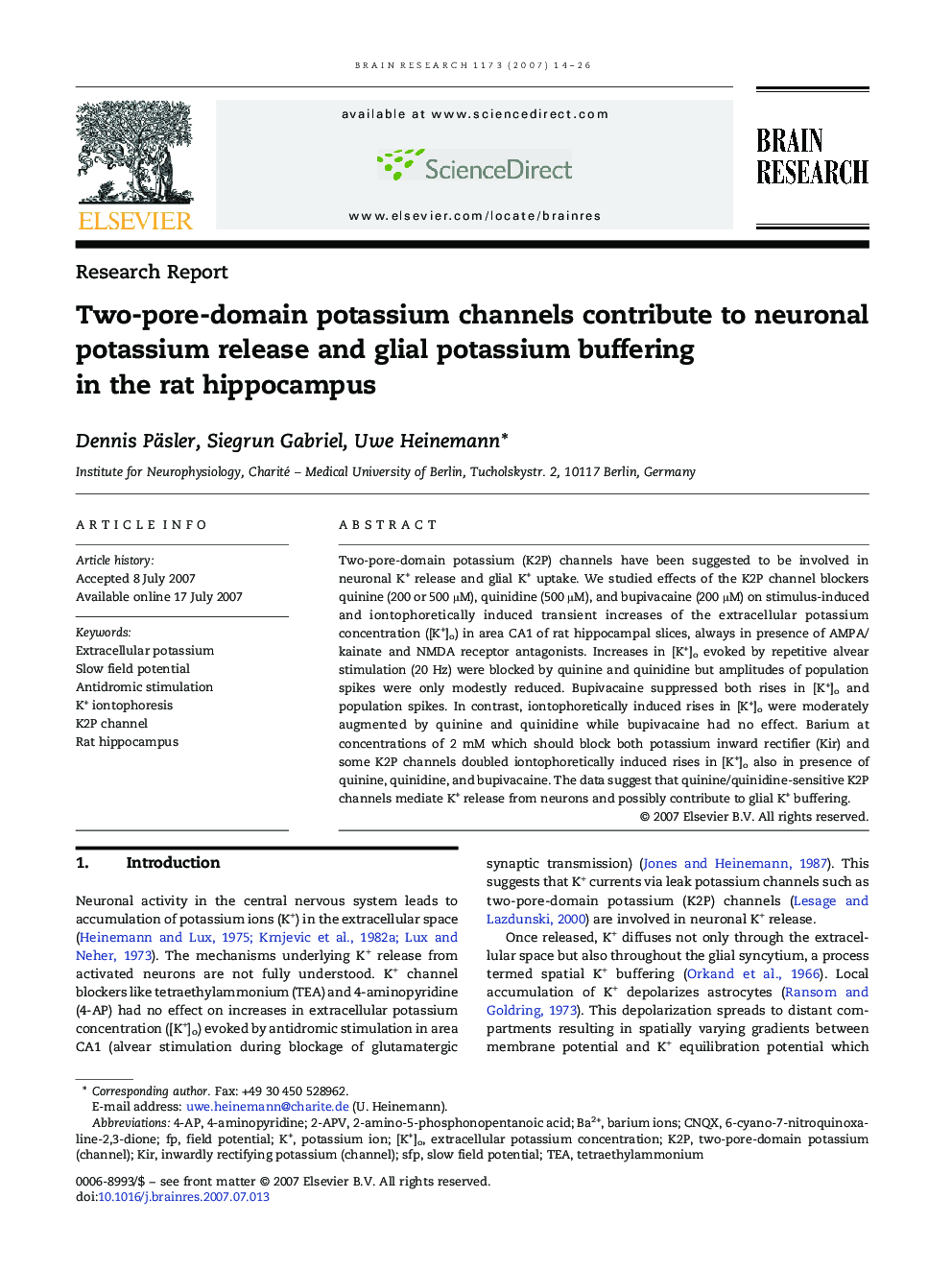| Article ID | Journal | Published Year | Pages | File Type |
|---|---|---|---|---|
| 4330674 | Brain Research | 2007 | 13 Pages |
Two-pore-domain potassium (K2P) channels have been suggested to be involved in neuronal K+ release and glial K+ uptake. We studied effects of the K2P channel blockers quinine (200 or 500 μM), quinidine (500 μM), and bupivacaine (200 μM) on stimulus-induced and iontophoretically induced transient increases of the extracellular potassium concentration ([K+]o) in area CA1 of rat hippocampal slices, always in presence of AMPA/kainate and NMDA receptor antagonists. Increases in [K+]o evoked by repetitive alvear stimulation (20 Hz) were blocked by quinine and quinidine but amplitudes of population spikes were only modestly reduced. Bupivacaine suppressed both rises in [K+]o and population spikes. In contrast, iontophoretically induced rises in [K+]o were moderately augmented by quinine and quinidine while bupivacaine had no effect. Barium at concentrations of 2 mM which should block both potassium inward rectifier (Kir) and some K2P channels doubled iontophoretically induced rises in [K+]o also in presence of quinine, quinidine, and bupivacaine. The data suggest that quinine/quinidine-sensitive K2P channels mediate K+ release from neurons and possibly contribute to glial K+ buffering.
